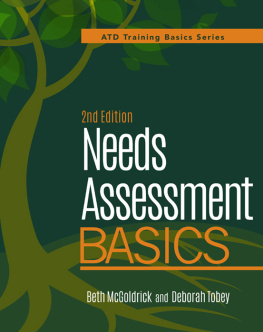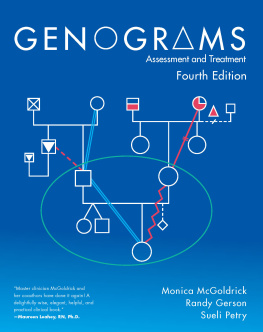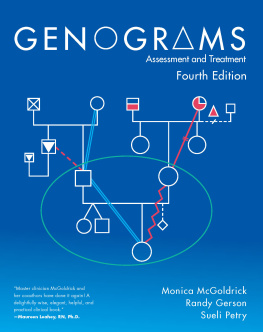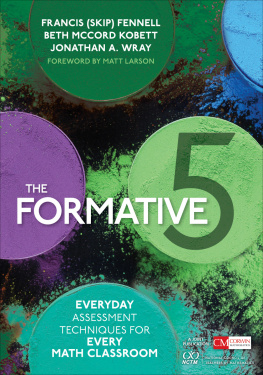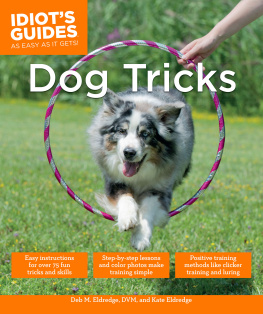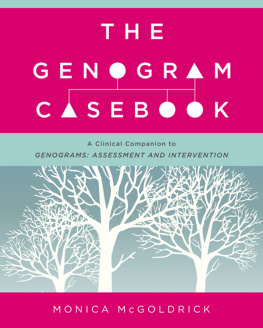McGoldrick Beth - Needs assessment basics
Here you can read online McGoldrick Beth - Needs assessment basics full text of the book (entire story) in english for free. Download pdf and epub, get meaning, cover and reviews about this ebook. City: Alexandria, VA, year: 2016, publisher: ATD Press, genre: Business. Description of the work, (preface) as well as reviews are available. Best literature library LitArk.com created for fans of good reading and offers a wide selection of genres:
Romance novel
Science fiction
Adventure
Detective
Science
History
Home and family
Prose
Art
Politics
Computer
Non-fiction
Religion
Business
Children
Humor
Choose a favorite category and find really read worthwhile books. Enjoy immersion in the world of imagination, feel the emotions of the characters or learn something new for yourself, make an fascinating discovery.
- Book:Needs assessment basics
- Author:
- Publisher:ATD Press
- Genre:
- Year:2016
- City:Alexandria, VA
- Rating:4 / 5
- Favourites:Add to favourites
- Your mark:
- 80
- 1
- 2
- 3
- 4
- 5
Needs assessment basics: summary, description and annotation
We offer to read an annotation, description, summary or preface (depends on what the author of the book "Needs assessment basics" wrote himself). If you haven't found the necessary information about the book — write in the comments, we will try to find it.
Needs assessment basics — read online for free the complete book (whole text) full work
Below is the text of the book, divided by pages. System saving the place of the last page read, allows you to conveniently read the book "Needs assessment basics" online for free, without having to search again every time where you left off. Put a bookmark, and you can go to the page where you finished reading at any time.
Font size:
Interval:
Bookmark:


2016 ASTD DBA the Association for Talent Development (ATD)
All rights reserved. Printed in the United States of America.
19 18 17 16 1 2 3 4 5
No part of this publication may be reproduced, distributed, or transmitted in any form or by any means, including photocopying, recording, or other electronic or mechanical methods, without the prior written permission of the publisher, except in the case of brief quotations embodied in critical reviews and certain other noncommercial uses permitted by copyright law. For permission requests, please go to www.copyright.com, or contact Copyright Clearance Center (CCC), 222 Rosewood Drive, Danvers, MA 01923 (telephone: 978.750.8400; fax: 978.646.8600).
ATD Press is an internationally renowned source of insightful and practical information on talent development, workplace learning, and professional development.
ATD Press
1640 King Street
Alexandria, VA 22314 USA
Ordering information: Books published by ATD Press can be purchased by visiting ATDs website at www.td.org/books or by calling 800.628.2783 or 703.683.8100.
Library of Congress Control Number: 2016948058
ISBN-10: 1-56286-774-1
ISBN-13: 978-1-56286-774-4
e-ISBN: 978-1-56286-569-6
ATD Press Editorial Staff
Director: Kristine Luecker
Manager: Christian Green
Community of Practice Manager, Learning & Development: Amanda Smith
Senior Associate Editor: Melissa Jones
Cover Design: Anthony Julian
Text Design: Iris Sanchez
Printed by Versa Press, Inc., East Peoria, IL
ATDs Training Basics series recognizes and, in some ways, celebrates the fast-paced, ever-changing reality of organizations today. Jobs, roles, and expectations change quickly. One day you might be a network administrator or a process line manager, and the next day you might be asked to train 50 employees in basic computer skills or to instruct line workers in quality processes.
Where do you turn for help? The ATD Training Basics series is designed to be your one-stop solution. The series takes a minimalist approach to your learning curve dilemma and presents only the information you need to be successful. Each book in the series guides you through key aspects of training: giving presentations, making the transition to the role of trainer, designing and delivering training, and evaluating training. The books in the series also include some advanced skills, such as performance and basic business proficiencies.
The ATD Training Basics series is the perfect tool for training and performance professionals looking for easy-to-understand materials that will prepare nontrainers to take on a training role. In addition, this series is the consummate reference tool for any trainers bookshelf and a quick way to hone your existing skills.
It has been more than 10 years since the first edition of this book was written. In that time, the world has changed substantially. With the financial crisis starting in 2008 that continues to challenge organizations today, as well as outbreaks of war and terrorism, many organizations are hesitant to make additional investments in hiring more people, and thus are expecting more out of the people on their payrolls. Organizations need their current employees to be more efficient and more effective. This is where training and other HRD professionals can make a huge impact.
Over the past few years, training professionals have built inroads into helping organizations design, develop, and implement training programs that help organizations overcome knowledge and skill problems, successfully introduce new products into the marketplace, and help them succeed in doing more with less. However, there is still room to build a stronger relationship between training professionals and the organizations they work with through performance consulting.
In this second edition, youll see:
a greater emphasis on how a training professional can move from being a training order taker to being a valued performance consultant
information on implementing a return on expectations (ROE) focus in which the client has expectations for the results of the training program, but doesnt want to pursue a return on investment (ROI) strategy
a stronger link for human performance improvement (HPI) to help organizations with the systematic and systemic discovery of the root causes that prevent them from getting the results they desire.
This book is still designed for new or established training professionalsinstructional designers, trainers, or training department managerswho want to make sure that their training programs meet the performance needs of their organizations. If youre reading this book, its likely that your goals are to develop the foundation that will ensure the training programs you design and deliver will help the organization succeed.
To successfully assess training needs, you need to be able to identify the context for a training course request at four separate stages. Youll also have to identify the big picture of training needs throughout the organization. This book can help you do that. Heres a summary of the 10 chapters in Needs Assessment Basics:
, Why Needs Assessment? gives you an overview of the book. It focuses on the multiple purposes of needs assessment and serves as a foundational layer for the rest of the book.
, The Training Request, shows you how to begin analyzing training needs within the most common framework encountered by trainers: receiving a training request from a client or manager in your organization. You will learn about the four stages of data collection required for thorough needs assessment and about the challenge of creating internal credibility so that you can conduct your needs assessment.
, Identifying Questions and Data Sources, helps you identify questions that must be answered by the training needs assessment. You will also discover how to identify the sources that will provide the necessary data with the help of your business partners and client.
, Evaluating Potential Data Collection Methods, offers guidance on how to choose data collection methods to answer the identified questions using the selected data sources. When comparing data collection methods, you must consider time and resource constraints, and realize that certain methods work best for certain information needs.
, Data Collection Implementation, offers guidance in the ultimate choice of data collection methods and provides some tips and techniques for carrying out the data collection process.
, Data Analysis, discusses what you discoverwhat the data tell you about the training need being investigated. One of the most important points is the fact that data are not the same things as recommendations.
, Data Analysis Recommendations, demonstrates the difference between data and recommendations. Recommendations are the needs assessors actual conclusions and suggested actions that she thinks should be carried out. The needs assessors role in identifying issues that are unrelated to training is also examined.
, Communicating With Your Client, presents communication techniques that can assist you in reaching your goal: the implementation of your recommendations to help the business improve. You will explore planning a presentation tailored to a specific client and stakeholders.
Font size:
Interval:
Bookmark:
Similar books «Needs assessment basics»
Look at similar books to Needs assessment basics. We have selected literature similar in name and meaning in the hope of providing readers with more options to find new, interesting, not yet read works.
Discussion, reviews of the book Needs assessment basics and just readers' own opinions. Leave your comments, write what you think about the work, its meaning or the main characters. Specify what exactly you liked and what you didn't like, and why you think so.

